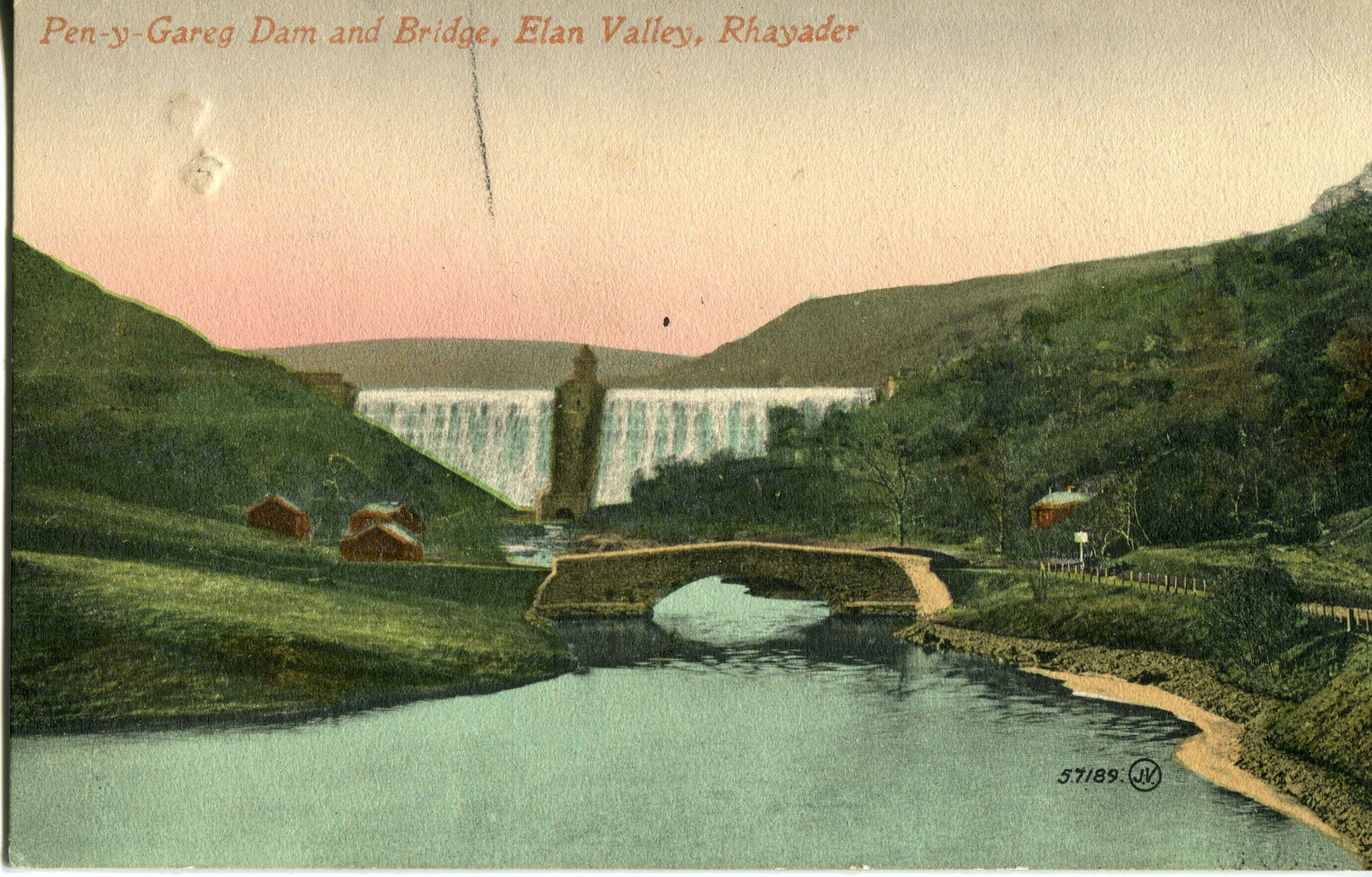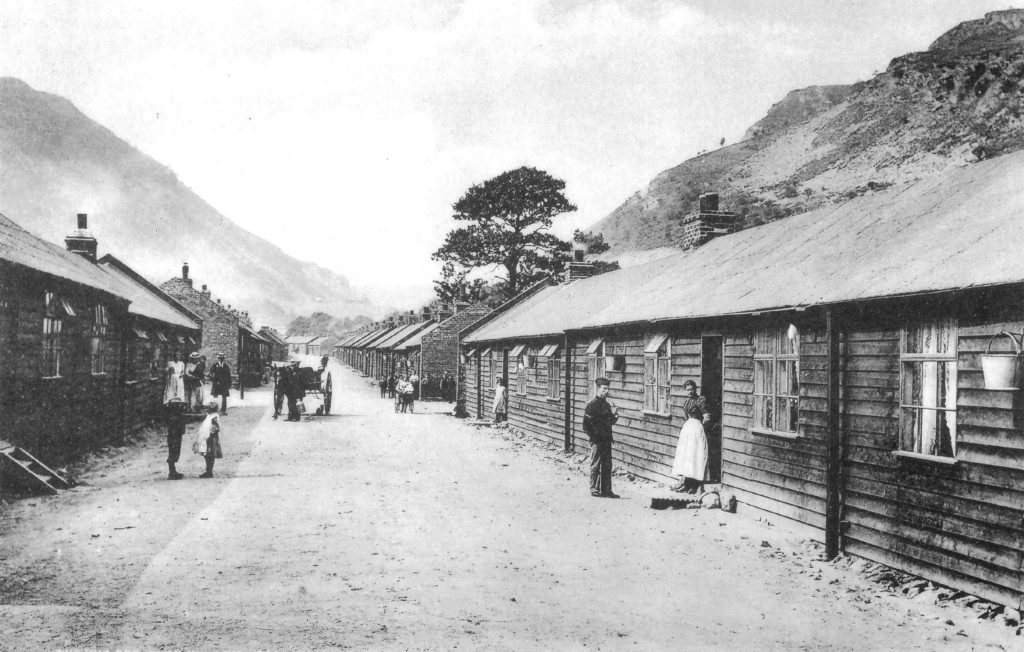
In 1893 the building work began. 100 occupants of the Elan Valley had to move, only landowners received compensation payments. Many buildings were demolished: the two country houses Cwm Elan and Nantgwyllt as well as 44 properties in total, of which included 18 farms, a school and a church that was replaced by the corporation as the Nantgwyllt Church. A railway line was constructed to transport the workers and thousands of tonnes of building material each day. This took three years. A village of wooden huts was purpose built to house most of the workers on the site of the present Elan Village.
New workers spent a night in the dosshouse to be deloused and examined for infectious diseases, only then were they allowed across the river to the village. Single men lived in groups of eight in a terrace house shared with a man and his wife. A school was provided for those under 11, after this they were expected to work. The village employed a guard to look out for illegal importation of liquor and unauthorised visitors. There was a hospital for injuries and an isolation hospital. A bath house which the men could use up to 3 times a week but the women only once! The canteen could serve as a pub but this was reserved for men only. Other facilities included a library, public hall and shop. There was even street lighting (powered by hydroelectric generators).
The dams were built in two phases, firstly construction in the Elan Valley and later the Claerwen. The foundations of Dol y Mynach Dam were laid in phase one as the site would have flooded once Caban Coch had filled up. Local rock was only suitable for use inside of the dams. The hand-chiselled facing stones were transported from Glamorgan. On 21st July 1904 King Edward VII and Queen Alexandra opened the Elan dams and water started flowing along 118 km of pipeline to Birmingham. The whole of the Elan scheme had cost £6 million and employed 50,000 men in total. Water is extracted from the Foel Tower to the Severn Trent water treatment works. It is cleaned by rapid gravity filter sand beds. Chlorine, fluoride and lime (to neutralise the acidic water) are added. The Foel Tower stands 52 metres above Frankley Reservoir in Birmingham. The gradient of the aqueduct which links them averages 1 in 2,300, which allows the water to flow by gravity alone.
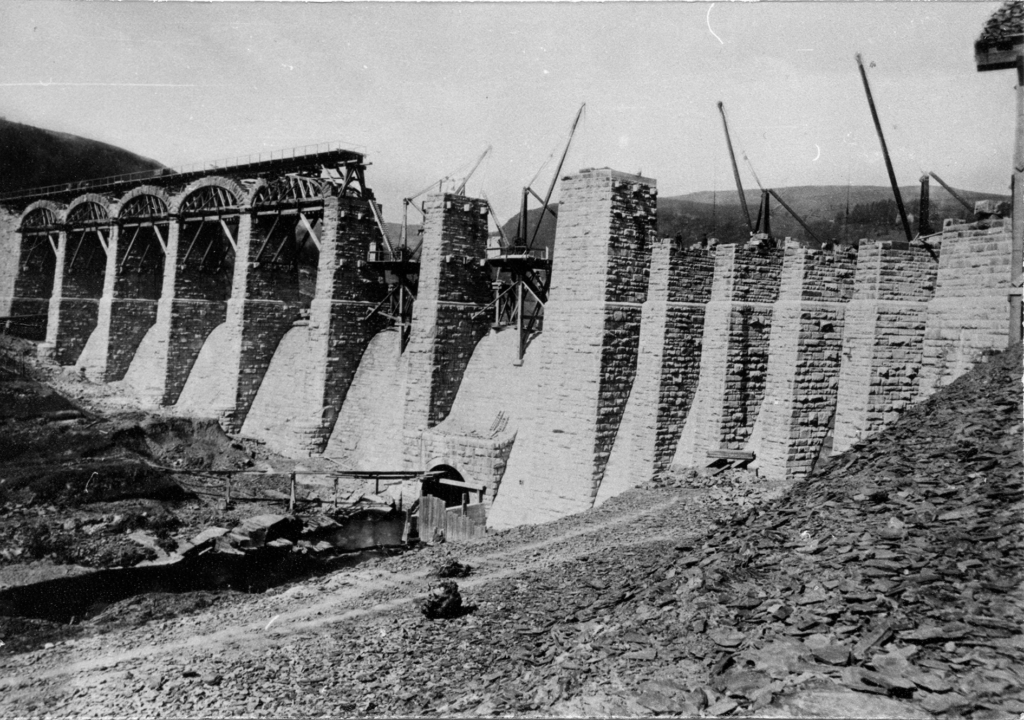
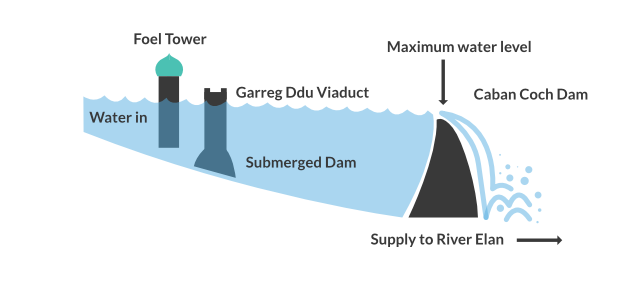
The Submerged Dam
The submerged dam at Garreg Ddu holds water back on the upstream side so that water can always be extracted at the Foel Tower. The bottom of Caban Coch Reservoir is too low to allow water to be gravity fed to Birmingham. Extraction from here would require pumps.
Elan Valley Aqueduct
Delivering the large quantities of water from the Elan Valley to Birmingham through hills and river valleys was a huge undertaking and, unlike the building of the dams, was carried out by outside contractors in allotted sections beginning in 1896. The first continuous flow of water through the aqueduct took place on 28th July 1904, one week after the official opening of the system by King Edward VII.
The water from the Elan Valley reservoirs begins its journey at the Foel Tower, just behind Garreg Ddu viaduct. Here, water is drawn off through screens to exclude larger debris and into 2km of brick-lined tunnel to a series of 30 filter beds. These filter beds did not form part of the original plans, but were included after blockages occurred in a similar system supplying Liverpool. In order to meet the required gradient (1:2300) to supply water to Birmingham by gravity alone, the filter beds had to be constructed high up on the hillside east of Caban Coch at considerable extra expense.
After being rough filtered, the water continues its journey through the aqueduct towards Birmingham via a system of tunnelling, ‘cut and cover’ work and iron and steel pipes. Rather than following a straight line, the aqueduct follows the contours of the land for 118km, dropping only 52m in height before arriving at its destination at Frankley Reservoir in Birmingham after about 3 days.
Little can be seen of the aqueduct today except for the many red-brick service buildings situated along the route and the ornate bridges where it crosses river valleys.
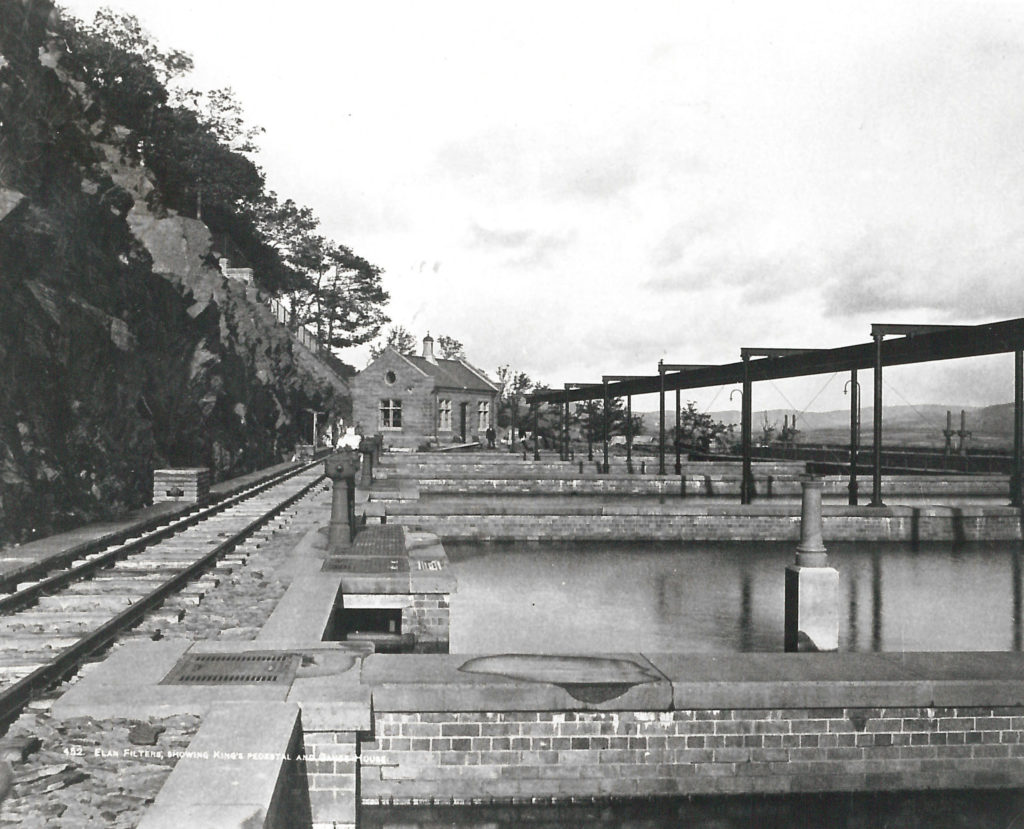

The River Elan is compensated with 68 million litres of water a day from Caban Coch. This can be increased to 232 million litres per day so that South Wales can also benefit from this water as the River Elan flows into the River Wye from which water can be transferred in times of shortage. Water is extracted from Caban Coch Reservoir for the Welsh Water treatment works which supplies the local area. An average of 360 million litres of water a day from the Elan Valley can be extracted to supply Birmingham. Once the Claerwen Dam was completed this nearly doubled the available water for Birmingham.
The building of the second phase dams was delayed due to the First World War. Work started in 1946, engineering advancements required the building of just one large dam rather than 3 smaller ones. This dam, the Claerwen, is built of concrete but stone faced to harmonise with the older dams. Masonry work was carried out by 100 Italian stonemasons as most British masons were occupied with rebuilding the House of Commons and other buildings damaged in the war. A total of 470 men worked on this dam, they were housed in the local community and all transport was by road. The dam was completed in 1952 and was opened by Queen Elizabeth II on October 23rd of that year.
